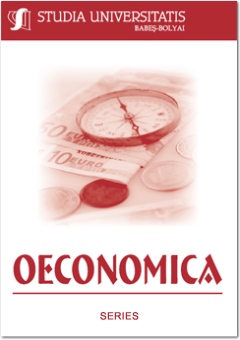DOES PUBLIC DEBT SERVICE EXPENDITURE CROWD-OUT ECONOMIC GROWTH? EMPIRICAL EVIDENCE FROM AN AFRICAN DEVELOPING COUNTRY
DOES PUBLIC DEBT SERVICE EXPENDITURE CROWD-OUT ECONOMIC GROWTH? EMPIRICAL EVIDENCE FROM AN AFRICAN DEVELOPING COUNTRY
Author(s): Talknice Saungweme, Nicholaus M. OdhiamboSubject(s): Economy, National Economy, Business Economy / Management, Micro-Economics, Financial Markets
Published by: Studia Universitatis Babes-Bolyai
Keywords: ARDL; economic growth; public debt service; Zimbabwe;
Summary/Abstract: This paper contributes to the ongoing debate on the impact of public debt service on economic growth; and it provides an evidence-based approach to public policy formulation in Zimbabwe. The empirical analysis was performed by applying the autoregressive distributed lag (ARDL) technique to annual time-series data from 1970 to 2017. The study findings reveal that the impact of public debt service on economic growth in Zimbabwe is negative in the short run but positive in the long run. The results are suggestive of the existence of a crowding-out effect of public debt service in Zimbabwe in the short run and a crowding-in effect in the long run. In view of these findings, the government should consider fiscal and financial policies that promote a constant supply of long-term finance, long-term fixed investments, and extension of a government securities maturity structure so as to ensure sustainable short- and long-term public debt service expenditures. The study further recommends the strengthening of non-distortionary revenue mobilisation reforms to reduce market distortions and boost domestic investment.
Journal: Studia Universitatis Babes Bolyai - Oeconomica
- Issue Year: 64/2019
- Issue No: 3
- Page Range: 23-38
- Page Count: 16
- Language: English

